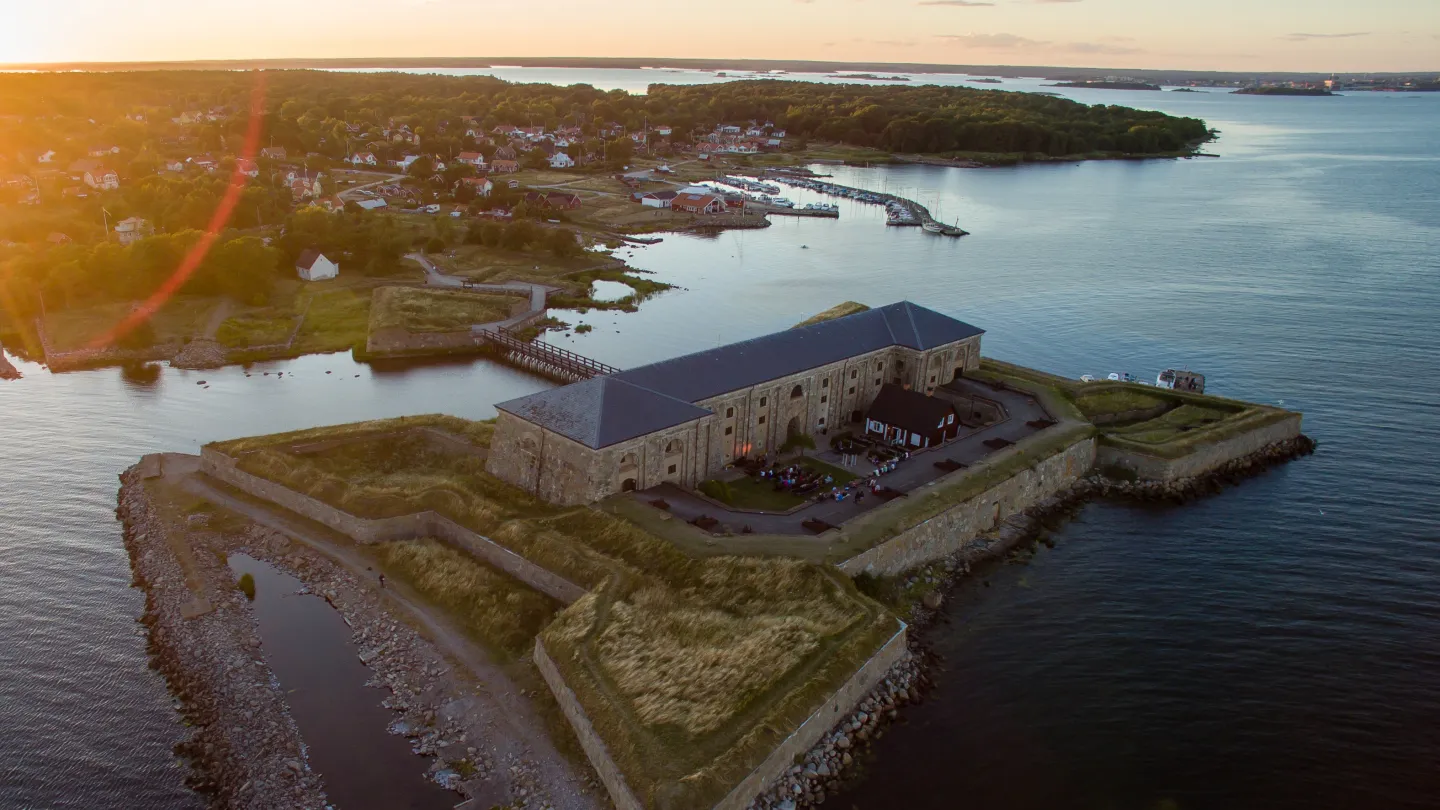Blekinge became Swedish in the Treaty of Roskilde in 1658, but the Scanian War in the 1670s led King Karl XI to fortify the newly acquired land areas. The strategic maritime location prompted the king to relocate the naval fleet from Stockholm and build the new city of Karlskrona. For the large warships, the passage between Aspö and Tjurkö is the only way to reach Karlskrona.
By placing cannons on these islands, one can control the maritime traffic to Karlskrona. In November 1679, Karl XI visited the archipelago islands of Aspö, Tjurkö, and Trossö and commissioned the military and architect Erik Dahlberg to build redoubts on islets at Aspö and Tjurkö. Fortification Captain Carl Magnus Stuart made drawings based on Dahlberg's instructions and carried out the practical work since Dahlberg was responsible for just over a hundred fortress works. On the islet of Dynan at Aspö, a donjon, or elevated battery, with 60 large cannons and four bastions, is to be erected. The work is to begin on the first day of spring in 1680. That is what becomes Drottningskär Citadel. In 1680, the king decided that the redoubts of Drottningskär at Aspö and Kungsholmen at Tjurkö should be made "cannon-proof." Drottningskär Citadel took time to build. It was erected between 1680 and 1769 and is considered one of the foremost creations of Swedish fortification, with architectural craftsmanship that stands up well against fortresses in Sweden and Europe for a long time to come. Dahlbergh's ideas spread to France and Germany during the 18th and 19th centuries.
The fortress consists of an elongated donjon of granite and limestone with a battery for the cannons at the top and space for barracks and two large powder magazines at the bottom of the building. Drottningskär has four bastions named after the four queens Maria, Christina, Hedvig, and Ulrica. In the courtyard, the "new" commandant's residence remains. It was built between 1723 and 1734. Drottningskär Citadel is well preserved. It has withstood both time and the forces of nature but has never been subjected to any attacks or modernizations. The fortress has been militarily equipped periodically, with up to 250 men stationed at most. In 1820, Kungsholmsfort at Tjurkö took over the role of the main facility at the entrance to Karlskrona, and in 1895, Drottningskär Citadel ceased to be counted as an active fortified facility. In 1897, it was proposed to build a new fort on Aspö. Ellenabbsfortet, as it is called, was initially equipped with ship cannons, just like Drottningskär Citadel. Subsequently, the establishment of a number of batteries followed: battery Bollösund 1904, battery Aspöberg 1924, battery Hytterna 1927, battery Bäckastrand 1931, battery Jutudden 1940, and finally battery Ellenabben 1970. Between 1914 and 1928, Drottningskär Citadel served as a provisional coastal artillery battery, and during the Second World War, the fortress was used as accommodation and storage.
Fact text written by Marie Chen, Karlskrona Municipality, in collaboration with Blekinge Museum, which provided the factual basis.

